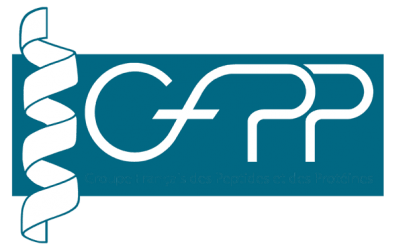
The results of an analysis on the presence of π-turns, characterized by an i ← i + 5 C=O···H–N intramolecular hydrogen bond, in the X-ray diffraction structures of peptides are discussed. π-Turns are often found at the C-end of incipient or fully developed α-helices, 310-helices, and mixed α-/310-helices, thus acting as a C-capping motif.
ABSTRACT
The results of an analysis on the presence of π-turns, characterized by an i ← i + 5 C=O···H–N intramolecular hydrogen bond, in the X-ray diffraction structures of peptides are discussed. The survey returned a total of 55 π-turn occurrences in linear and cyclic peptides. π-Turns characterized by a helical conformation for residue i + 4, but with a screw sense opposite to that of the three preceding residues, are largely prevailing. They are often found at the C-end of incipient or fully developed α-helices, 310-helices, and mixed α-/310-helices, thus acting as a C-capping motif. However, the structures of two linear peptides and 15 cyclopeptides indicate that these types of π-turns can exist in isolation, without the support of a preceding helix. The frequent presence of additional intramolecular hydrogen bonds internal to the π-turn is also investigated. Cyclopeptides offered examples of two types of π-turns that have no parallel in the structures of proteins. Differently from proteins, π-turns characterized by helical ϕ, ψ sets of the same screw sense for all internal residues are hitherto unreported in the X-ray diffraction structures of peptides. A suggestion for the rational design in peptides/peptidomimetics of a π-turn featuring the screw-sense reversal of residue i + 4 is proposed.


